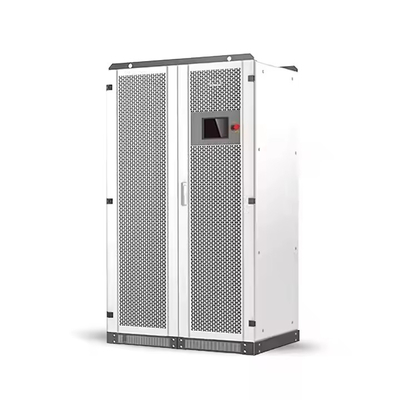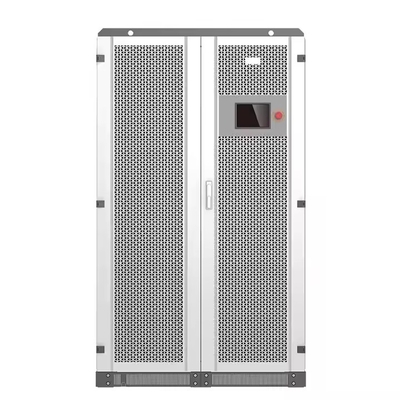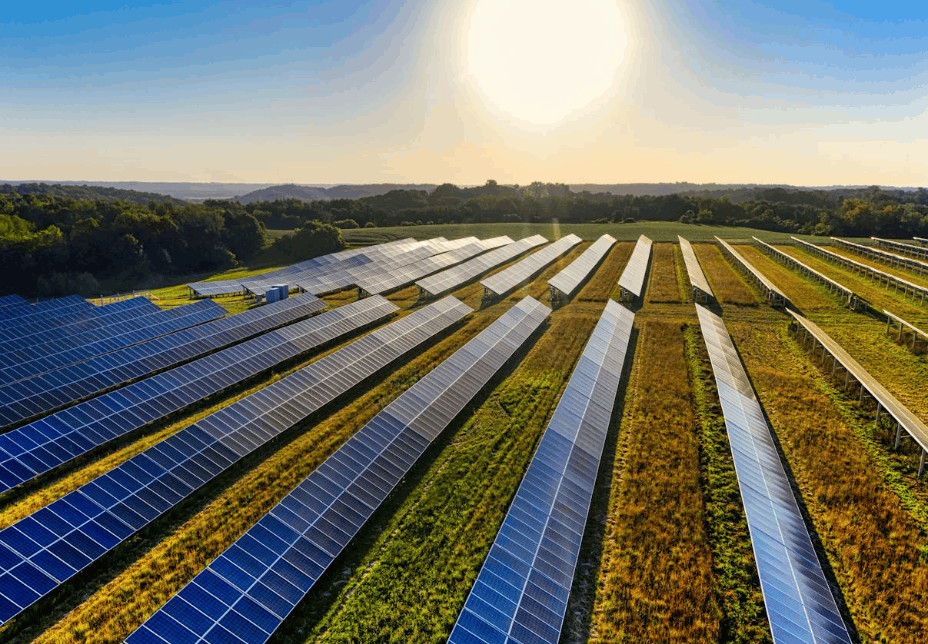1. Product Overview
This 50kW industrial hybrid inverter is engineered for demanding off-grid and hybrid power applications, delivering reliable three-phase power for commercial and industrial use. Combining high-efficiency solar conversion, flexible battery integration, and smart grid interaction, it's the ideal solution for mines, island communities, and large agricultural operations requiring uninterrupted power supply.
2. Key Features & Technical Advantages
2.1 Industrial-Grade Power Output
-
50kW continuous power (55kVA peak) for heavy loads
-
Three-phase 208V/220V/240V Wye output configuration
-
110% continuous overload capacity for demanding startups
-
<3% THDi for clean grid synchronization
-
Adjustable 0.8 leading/lagging power factor
2.2 Optimized Solar Harvesting
-
1-2 MPPT trackers with independent optimization
-
60kW standard PV input (expandable to 120kW)
-
Ultra-wide 250-850V MPPT voltage range
-
1,000V max PV input for high-voltage string configurations
-
>98% conversion efficiency under real-world conditions
2.3 Advanced Battery Integration
-
320-850V battery voltage range for high-voltage systems
-
60kW charging power (120kW max)
-
Supports lithium-ion/LFP/lead-acid/flow batteries
-
Configurable charge/discharge curves for battery longevity
-
CAN/RS485 communication for BMS integration
2.4 Smart Grid & Generator Interaction
-
Seamless grid-tie/off-grid/hybrid operation modes
-
Automatic generator start/stop synchronization
-
Frequency shift protection for island grids
-
Load priority management for critical circuits
2.5 Rugged Industrial Design
-
-30°C to +55°C operating temperature range
-
IP20 protected electrical components
-
<70dB quiet operation
-
Forced air cooling with temperature control
-
5,000m altitude rating (with derating above 3,000m)
3. Technical Specifications
| Category |
Specifications |
| AC Output |
|
| Rated Power |
50 kW (55kVA max) |
| Voltage Options |
208V/220V/240V (Wye) |
| Frequency |
50/60 Hz (±5 Hz adjustable) |
| PV Input |
|
| Max. PV Voltage |
1,000V |
| MPPT Trackers |
1-2 |
| Max. PV Power |
60/120 kW |
| Battery |
|
| Voltage Range |
320-850V |
| Charging Power |
60/120 kW |
| Physical Data |
|
| Dimensions |
800×800×1,900 mm |
| Weight |
720-750 kg |
| Certifications |
EN 62109, IEC 61727, VDE 4105, NRS 097-2-1 |
4. Industrial Applications
4.1 Mining Operations
4.2 Island Microgrids
-
Resort/hotel power systems
-
Fishing community electrification
-
Desalination plant support
-
Emergency backup systems
4.3 Agricultural Facilities
-
Large-scale irrigation systems
-
Cold storage warehouses
-
Livestock processing plants
-
Greenhouse climate control
4.4 Industrial Backup
5. Intelligent System Features
5.1 Parallel Operation
-
Unlimited parallel units for capacity expansion
-
Automatic load sharing between inverters
-
Phase balancing for uneven loads
-
Redundant operation for critical systems
5.2 Remote Monitoring & Control
-
7" LCD touchscreen interface
-
TCP/IP/RS485/CAN communication ports
-
Cloud monitoring capability
-
Firmware upgradable for future features
-
Alarm/notification system for faults
5.3 Energy Management
6. Frequently Asked Questions
Q: What maintenance is required?
A: Minimal maintenance needed - just periodic air filter cleaning and visual inspections. The rugged design ensures long service intervals.
Q: Can it power sensitive medical equipment?
A: Yes, the <3% THDi and stable voltage regulation make it suitable for medical applications when properly configured.
Q: How does it handle multiple energy sources?
A: Automatically prioritizes solar → battery → generator based on programmable rules and real-time conditions.
Q: What monitoring options are available?
A: Choose from local display, web portal, mobile app, or integration with SCADA/EMS systems.
Q: Is technical support available?
A: Comprehensive support includes installation guidance, 24/7 troubleshooting, and firmware updates.
7. Installation & Compliance
7.1 Installation Requirements
-
Professional installation mandatory
-
Adequate ventilation space
-
Proper cable sizing for high currents
-
Lightning protection recommended
-
Secure mounting for seismic areas
7.2 Safety Certifications
8. Why Professionals Choose This Inverter
-
Industrial Reliability - Designed for 24/7 continuous operation
-
Future-Proof - Scalable as energy needs grow
-
Fuel Savings - Reduces generator runtime by 60-80%
-
Smart Integration - Works with existing power infrastructure
-
Global Compliance - Meets international standards

 Your message must be between 20-3,000 characters!
Your message must be between 20-3,000 characters! Please check your E-mail!
Please check your E-mail!  Your message must be between 20-3,000 characters!
Your message must be between 20-3,000 characters! Please check your E-mail!
Please check your E-mail! 










